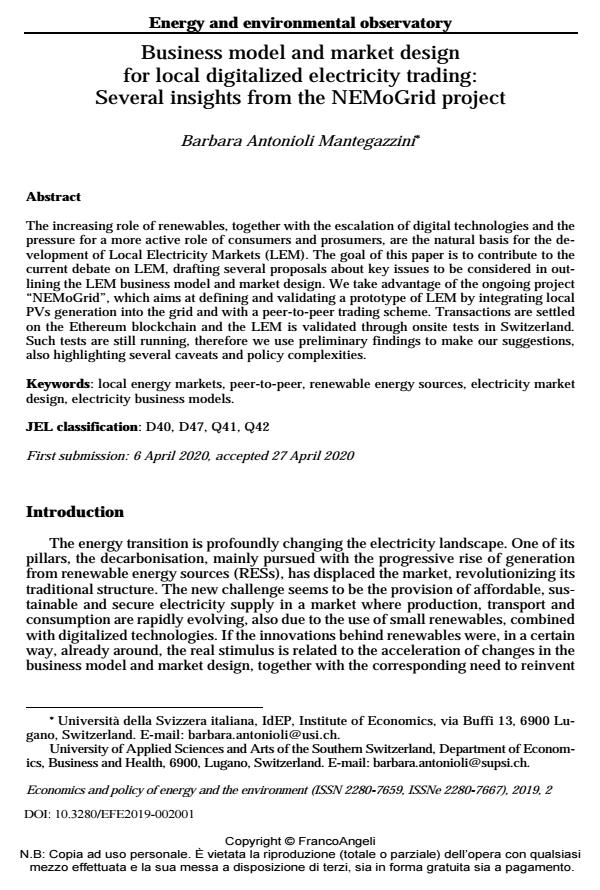Business model and market design for local digitalized electricity trading: Several insights from the NEMoGrid project
Titolo Rivista ECONOMICS AND POLICY OF ENERGY AND THE ENVIRONMENT
Autori/Curatori Barbara Antonioli Mantegazzini
Anno di pubblicazione 2020 Fascicolo 2019/2
Lingua Inglese Numero pagine 20 P. 5-24 Dimensione file 295 KB
DOI 10.3280/EFE2019-002001
Il DOI è il codice a barre della proprietà intellettuale: per saperne di più
clicca qui
Qui sotto puoi vedere in anteprima la prima pagina di questo articolo.
Se questo articolo ti interessa, lo puoi acquistare (e scaricare in formato pdf) seguendo le facili indicazioni per acquistare il download credit. Acquista Download Credits per scaricare questo Articolo in formato PDF

FrancoAngeli è membro della Publishers International Linking Association, Inc (PILA)associazione indipendente e non profit per facilitare (attraverso i servizi tecnologici implementati da CrossRef.org) l’accesso degli studiosi ai contenuti digitali nelle pubblicazioni professionali e scientifiche
The increasing role of renewables, together with the escalation of digital technologies and the pressure for a more active role of consumers and prosumers, are the natural basis for the development of Local Electricity Markets (LEM). The goal of this paper is to contribute to the current debate on LEM, drafting several proposals about key issues to be considered in outlining the LEM business model and market design. We take advantage of the ongoing project "NEMoGrid", which aims at defining and validating a prototype of LEM by integrating local PVs generation into the grid and with a peer-to-peer trading scheme. Transactions are settled on the Ethereum blockchain and the LEM is validated through onsite tests in Switzerland. Such tests are still running, therefore we use preliminary findings to make our suggestions, also highlighting several caveats and policy complexities. Keywords: local energy markets, peer-to-peer, renewable energy sources, electricity market design, electricity business models.
Jel codes:D40, D47, Q41, Q42
- Energy communities in Europe: An overview of issues and regulatory and economic solutions Barbara Antonioli Mantegazzini, Cédric Clastres, Laura Wangen, in ECONOMICS AND POLICY OF ENERGY AND THE ENVIRONMENT 2/2023 pp.5
DOI: 10.3280/EFE2022-002001
Barbara Antonioli Mantegazzini, Business model and market design for local digitalized electricity trading: Several insights from the NEMoGrid project in "ECONOMICS AND POLICY OF ENERGY AND THE ENVIRONMENT" 2/2019, pp 5-24, DOI: 10.3280/EFE2019-002001